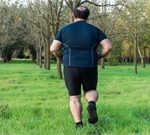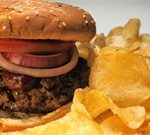(HealthDay News) — Facial wrinkles can be caused by aging, smoking and sun damage, says Cleveland Clinic. Though there are treatment options for wrinkles, it’s best to prevent them before they develop. Cleveland Clinic mentions these ways to prevent wrinkles: Apply sunscreen every day as part of your morning routine. Avoid products that are harsh on the skin. Find gentle moisturizers. Consume less sugar and refined carbohydrates. Get fresh air. Avoid environmental pollutants, such as soot and exhaust. Do your best to get six-to-eight hours of sleep each night. Include healthy fats in your diet, such as olive oil, nuts and avocado. If you smoke, quit.
A little about: Weekly Gravy
All Sauce from Weekly Gravy:
Recipes for a Festive Holiday Feast

Elegant holiday dishes are surprisingly easy to pull off when you stick to only a few ingredients. Try this delicious pork loin roast flavored with fragrant dried herbs and the perfect accompaniment — apples and sweet potatoes. Roasted Pork Loin 2-pound pork loin 1/2 teaspoon salt 1/4 teaspoon freshly ground black pepper 1 tablespoon extra-virgin olive oil 1/4 cup Dijon mustard 2 teaspoons mixed herbs, such as thyme, rosemary and sage Preheat oven to 400 degrees. Sprinkle pork with salt and pepper, then brown in a large, oven-proof skillet with the oil over medium-high heat for about 4 to 5 minutes. Turn off the heat and coat with the Dijon mustard and herbs. Cover loosely with aluminum foil and bake 35 to 40 minutes. Remove from oven and allow roast to rest 8 to 10 minutes so the juices can redistribute. Slice against the grain and serve. Yield: 4 to 6 servings Apple and Sweet Potato Bake 3 large sweet potatoes, peeled and thinly sliced 3 medium apples, thinly sliced 1 medium orange, zested and juiced 1/4 cup dark brown sugar, packed 1 teaspoon pumpkin pie spice 1/4 cup walnut pieces or chopped walnuts Preheat oven to 375 degrees. In a large bowl, toss sweet potatoes, apples, orange zest and juice, sugar and spice. Transfer to a 9-by-13-inch baking dish. Cover with foil and bake… read on >
Obesity Might Skew Blood Tests in Kids

If your child is obese, new research suggests that those extra pounds can alter the results of routine blood tests. “We performed the first comprehensive analysis of the effect of obesity on routine blood tests in a large community population of children and found that almost 70% of the blood tests studied were affected,” said study first author Victoria Higgins, from the Hospital for Sick Children in Toronto and the University of Toronto. Higgins’ team looked at more than 1,300 healthy children and teens in and around Toronto and found that obesity affected 24 routine blood tests, including those for liver function, inflammation markers, lipids and iron. The study was published Dec. 17 in the Journal of Clinical Endocrinology & Metabolism. “As clinical decisions are often guided by normative ranges based on a large healthy population, understanding how and which routine blood tests are affected by obesity is important to correctly interpret blood test results,” Higgins explained in a journal news release. It’s unclear if obesity’s impact on blood tests are a sign of early disease, but doctors should be aware of these findings when interpreting several types of blood tests in children, the researchers advised. “We hope our study results will assist pediatricians and family physicians to better assess children and adolescents with different degrees of overweight or obesity,” Higgins said. There’s been a… read on >
Can Apps Make Your Kids Smarter?

Smartphones, tablets and laptops are everywhere, and young children are fascinated by them. Now, new research suggests that parents might be able to harness that curiosity and use apps on the devices to boost early learning. The review found that apps could be particularly useful for teaching early math and language skills. “Screen time is here, and it’s here to stay. We should not just be paying attention to the amount of screen time, but instead to maximizing that screen time. The idea is to look for ways to leverage screen time in a positive way,” said study author Shayl Griffith, a postdoctoral associate in the department of psychology at Florida International University in Miami. The American Academy of Pediatrics (AAP) discourages any screen time before 18 months, except for video chatting. From 18 to 24 months, for those who want to introduce their children to digital media, the AAP recommends limited use of high-quality apps that you use with your child. From 2 years on, the AAP says to limit screen time to an hour a day. But instead of looking at the potential risks of too much screen time, Griffith and her team focused on the potential benefits of letting kids use apps. These readily available products are certainly effective at capturing kids’ attention. The researchers wondered if that would be useful in… read on >
Delicious Holiday Desserts With Fewer Calories

You can enjoy guilt-free holiday desserts by making some simple ingredient changes, a nutrition expert says. “I succeeded in making a healthier cheesecake that was a rich and creamy dessert that pleased even the most discerning taste buds,” said registered dietitian Libby Mills, a spokesperson for the Academy of Nutrition and Dietetics. “Making some substitutions from the traditional cheesecake recipe, I swapped plain low-fat yogurt for the sour cream. I made the crust by crushing equal parts high-fiber cereal and graham crackers and substituted the butter for lemon juice to bind the crumbs together,” Mills said in an academy news release. “My family loved it.” Healthy eating includes limiting the amount of calories from added sugars and saturated fats to less than 10% of your total daily calories. Mills offered other tips on making healthier desserts: Cut fats. Use applesauce instead of oil, margarine or butter in muffins and quick breads such as banana bread. Substitute a small amount at first because too much may change the texture of the muffins or quick bread. Reduce the amount of cholesterol by using two egg whites in place of one whole egg. Reduce the sugar. You can cut the amount of sugar in many recipes by 25% and no one will notice the difference. For example, use 3 tablespoons of sugar instead of 4. You might need… read on >
Health Tip: Taking Your Child on a Plane
(HealthDay News) — Flying with a small child can be dangerous without the proper equipment, especially if the ride gets bumpy. Holding your little one in your arms during turbulence is not safe. If you’re taking a child under 40 pounds on a plane, USAGov urges you to keep your child safe in a government-approved car seat or harness. Car seats 16 inches or less should fit in most plane seats. USAGov recommends asking airlines for a discounted fare. Purchasing a ticket for your child is the only guaranteed way to strap the child in safely.
Health Tip: Living With Weak Vision
(HealthDay News) — For folks with weak vision, eyeglasses, contact lenses, medicine and surgery may improve sight, says the National Eye Institute. Difficulty reading, matching colors and recognizing faces are common signs of weak vision. If you have vision loss, the institute stresses the need for a support team. Having a primary eye care professional and an optometrist or opthalmologist who specializes in weak vision is important. With your team, you can discuss options for support services, adaptive devices and vision rehabilitation. The institute encourages people with weak vision to be their own healthcare advocate. Remember to explore options, learn about your condition and ask questions.
Growing Obesity Rates May Contribute to Climate Change

Rising obesity rates worldwide may be contributing to the climate crisis, researchers report. “Our analysis suggests that, in addition to beneficial effects on morbidity, mortality and health care costs, managing obesity can favorably affect the environment as well,” said study corresponding author Faidon Magkos, from the department of nutrition, exercise and sports at the University of Copenhagen, in Denmark. Like other oxygen-dependent creatures, humans emit carbon dioxide that’s produced by metabolic processes necessary to live, the scientists explained. The amount of carbon dioxide — a greenhouse gas — produced by a species is determined by its average metabolic rate, average body size and the total number of individuals of the species. Obese people produce more carbon dioxide than those of normal weight, the researchers said. Also, obese people consume greater quantities of food and beverages that need to be produced and transported to them, and transportation of obese people requires more consumption of fossil fuels. This means higher carbon dioxide emissions related to food production and transportation for obese people, the study authors explained. The researchers estimated that obesity contributes to an extra 700 megatons of carbon dioxide emissions per year worldwide, or about 1.6% of all human-caused emissions. Overall, being obese is associated with about 20% more greenhouse gas emissions (carbon dioxide, methane and nitrous oxide) than being a normal weight, according to the… read on >
Lots of Overtime Could Send Your Blood Pressure Soaring

Long hours spent working will do no favors for your blood pressure, a new Canadian study suggests. The five-year study tracked the working hours and blood pressure readings of 3,500 white-collar workers at three public institutions in the province of Quebec. Compared to those who worked less than 35 hours a week, those who worked 49 or more hours each week had a 70% higher risk of what’s known as “masked” hypertension — high blood pressure that can be missed during a routine medical appointment, but is detected when blood pressure is tracked at home. Lots of overtime was also tied to a 66% higher risk of “sustained” hypertension — high blood pressure that’s recorded both in and out of healthcare settings. The study couldn’t prove cause-and-effect, but even a few extra working hours per week seemed to matter to heart health. For example, people who worked between 41 and 48 hours a week had a 54% higher risk of masked hypertension and a 42% higher risk of sustained hypertension, the researchers reported Dec. 19 in the journal Hypertension. The exact connection between overtime and higher blood pressure isn’t clear, said lead author Xavier Trudel. “The link between long working hours and high blood pressure in the study was about the same for men as for women,” noted Trudel. He’s an assistant professor in the… read on >
Unhealthy Eating Habits Cost U.S. $50 Billion a Year: Study

Healthier eating could save the United States more than $50 billion a year in health care costs associated with heart disease, stroke, type 2 diabetes and related illnesses, according to a new study. An unhealthy diet is one of the leading risk factors for poor health and accounts for up to 45% of all deaths from these cardiometabolic diseases, the researchers noted. But the economic cost of illnesses caused by poor eating habits hadn’t been tallied. In this study, researchers from Brigham and Women’s Hospital and Tufts University in Massachusetts created a model to measure the impact of 10 food and nutrient groups on cardiometabolic disease costs for Americans aged 35 to 85 years. Those 10 groups were fruits, vegetables, nuts/seeds, whole grains, unprocessed red meats, processed meats, sugar-sweetened beverages, polyunsaturated fats, seafood omega-3 fats and sodium. The researchers first looked at the effects of current eating habits and then did a recalculation if Americans ate the healthiest amounts of the 10 food/nutrient groups. The study authors concluded that poor eating habits cost the United States about $300 per person, or $50 billion, a year and accounted for 18% of heart disease, stroke and type 2 diabetes costs. Of those costs, 84% was for acute care, the researchers reported. Costs were highest for people with Medicare ($481 per person) and for those who were eligible… read on >









